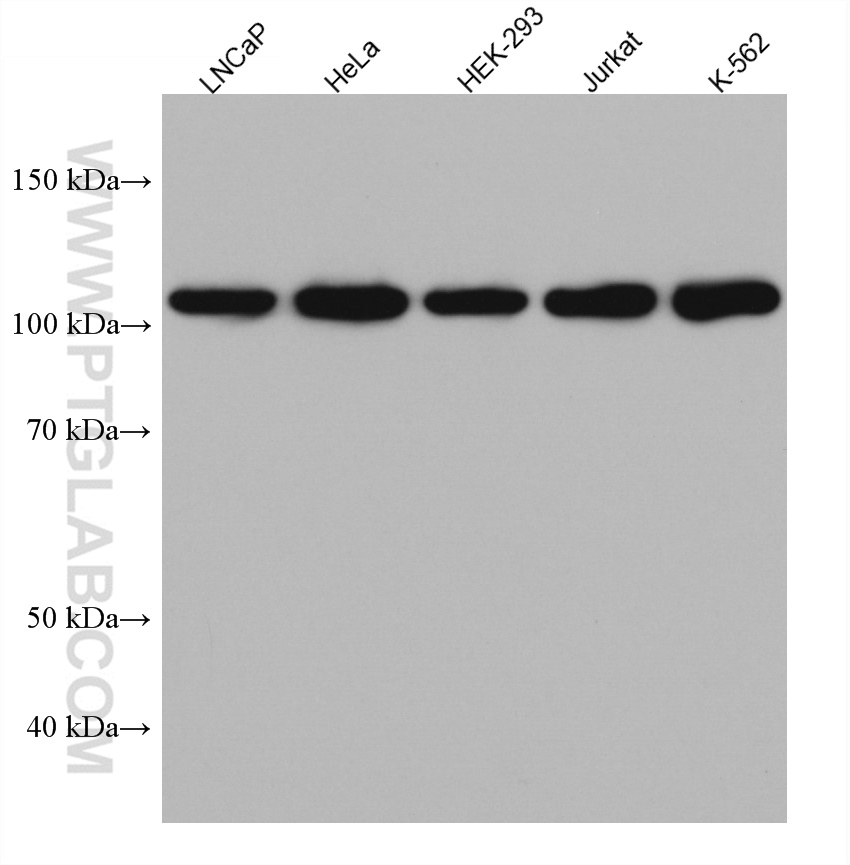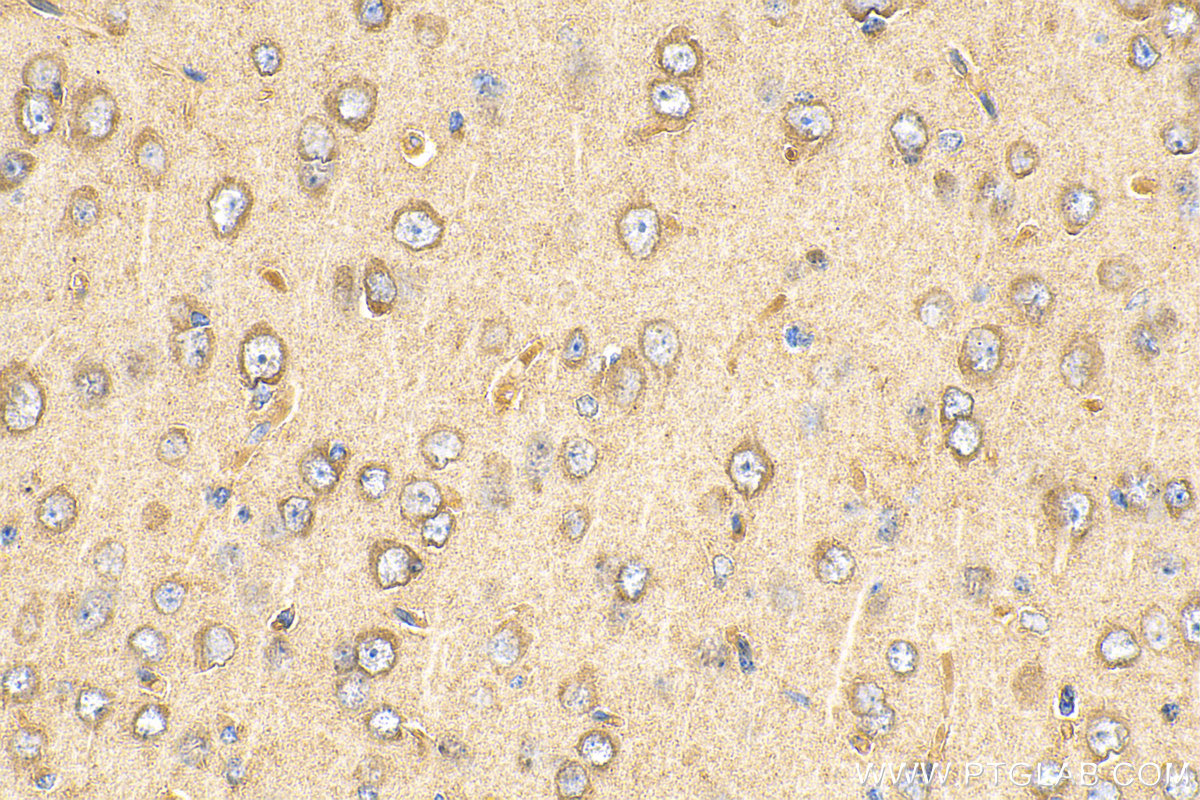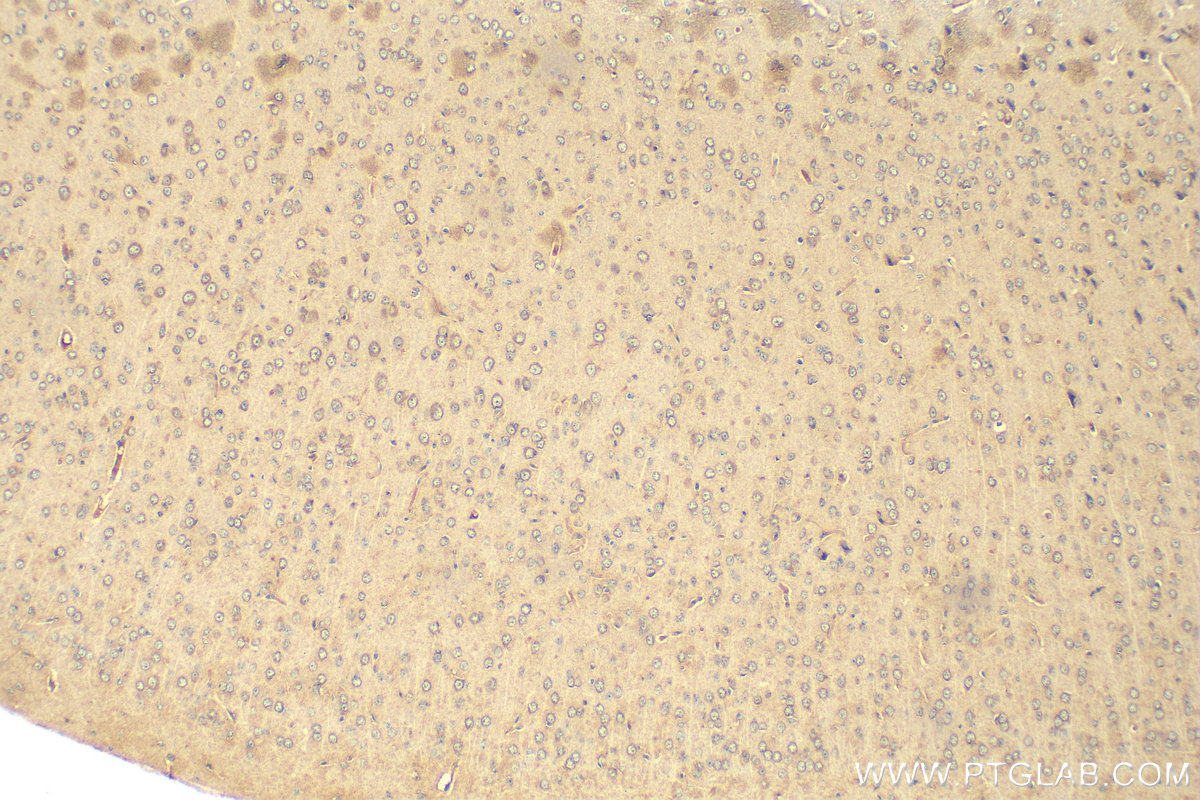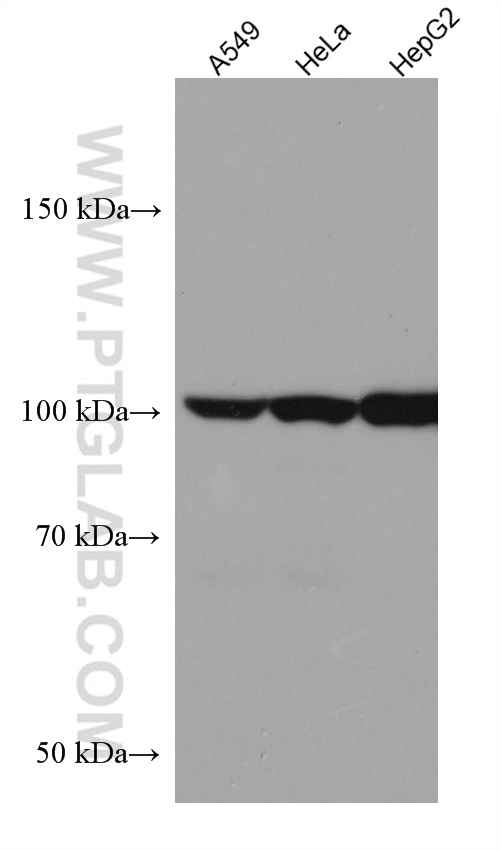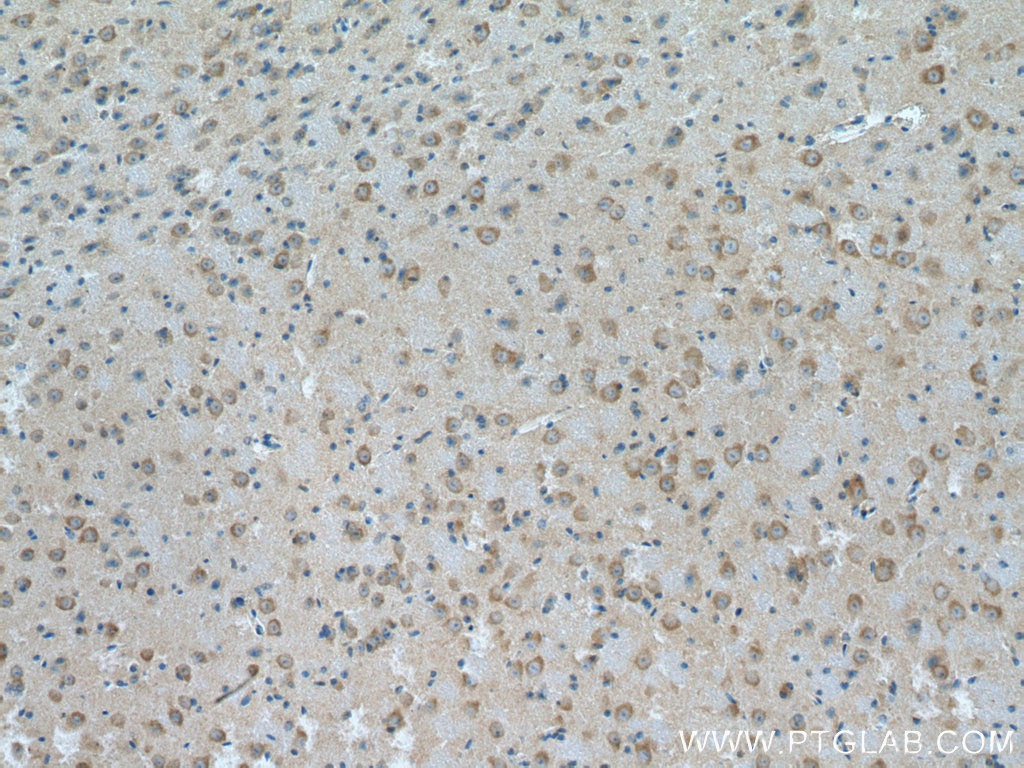验证数据展示
产品信息
67818-1-PBS targets HGS in WB, IHC, IF/ICC, ELISA applications and shows reactivity with Human, Mouse, Rat samples.
| 经测试应用 | WB, IHC, IF/ICC, ELISA Application Description |
| 经测试反应性 | Human, Mouse, Rat |
| 免疫原 |
CatNo: Ag28610 Product name: Recombinant human HGS protein Source: e coli.-derived, PET28a Tag: 6*His Domain: 186-387 aa of BC003565 Sequence: GQIFCGKCSSKYSTIPKFGIEKEVRVCEPCYEQLNRKAEGKATSTTELPPEYLTSPLSQQSQLPPKRDETALQEEEELQLALALSQSEAEEKERLRQKSTYTSYPKAEPMPSASSAPPASSLYSSPVNSSAPLAEDIDPELARYLNRNYWEKKQEEARKSPTPSAPVPLTEPAAQPGEGHAAPTNVVENPLPETDSQPIPPS 种属同源性预测 |
| 宿主/亚型 | Mouse / IgG2a |
| 抗体类别 | Monoclonal |
| 产品类型 | Antibody |
| 全称 | hepatocyte growth factor-regulated tyrosine kinase substrate |
| 别名 | HGS, HRS, Protein pp110, ZFYVE8 |
| 计算分子量 | 86 kDa |
| 观测分子量 | 110 kDa |
| GenBank蛋白编号 | BC003565 |
| 基因名称 | HGS |
| Gene ID (NCBI) | 9146 |
| RRID | AB_2918581 |
| 偶联类型 | Unconjugated |
| 形式 | Liquid |
| 纯化方式 | Protein A purification |
| UNIPROT ID | O14964 |
| 储存缓冲液 | PBS only, pH 7.3. |
| 储存条件 | Store at -80°C. The product is shipped with ice packs. Upon receipt, store it immediately at -80°C |
背景介绍
Hepatocyte growth factor-regulated tyrosine kinase substrate (HGS, synonyms: HRS, ZFYVE8) is a 110 to 115-kDa zinc finger phosphotyrosine protein inducible by stimulation with interleukin 2 (IL-2), granulocyte-macrophage colony-stimulating factor (GM-CSF) as well as hepatocyte growth factor (HGF), and is associated with signal-transducing adaptor molecule (STAM). HGS suppresses DNA synthesis upon stimulation with IL-2 and GM-CSF, counteracting the function of STAM which is critical for cell growth signaling mediated by the cytokines. HGS also interacts with the neurofibromatosis 2 tumor suppressor protein schwannomin/merlin. The growth suppression activity of schwannomin/merlin requires HGS and the binding of schwannomin/merlin to HGS facilitates its ability to function as a tumor suppressor, probably by inhibiting STAT activation.

